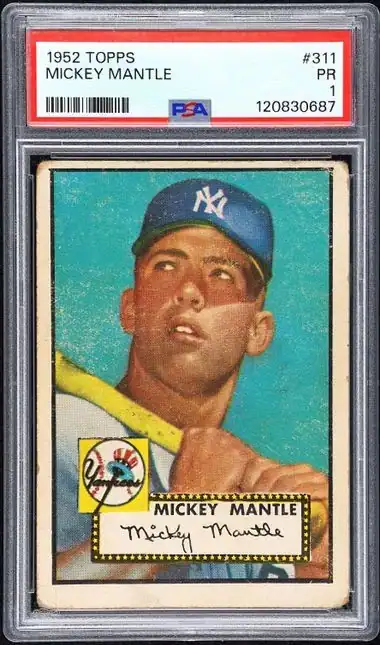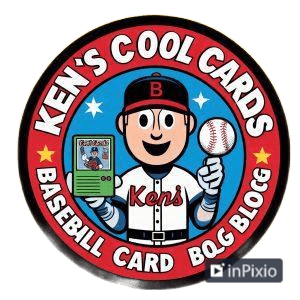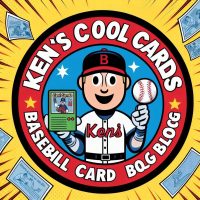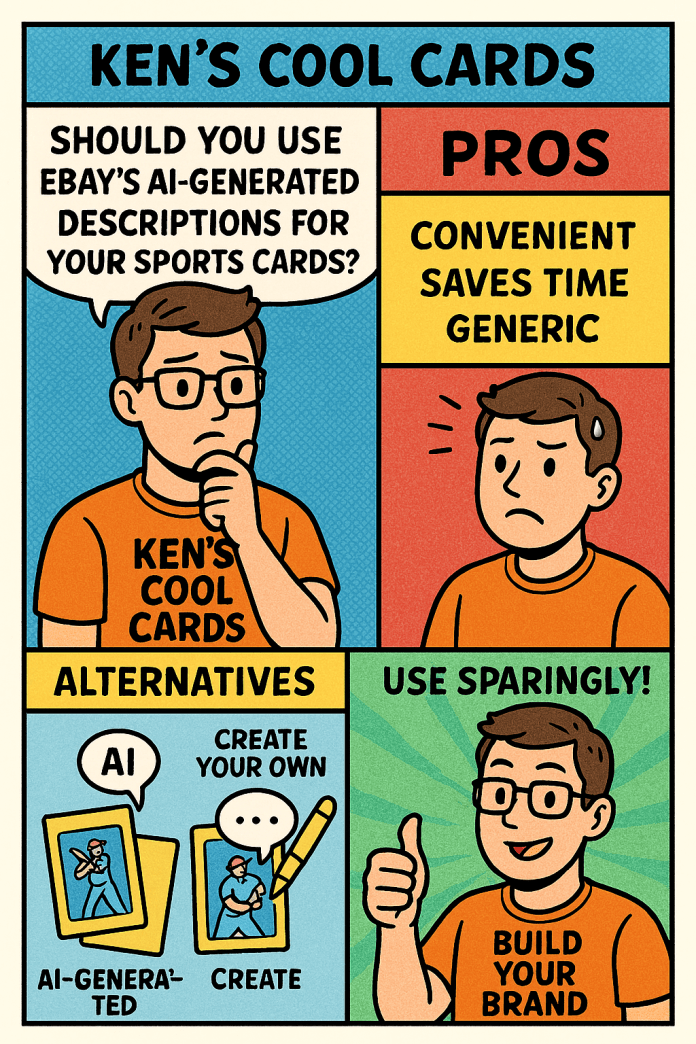Why Your Sports Card Descriptions Matter More Than You Think
In the world of sports card selling, your listing description isn’t just filler—it’s your pitch. Whether you’re selling a 1952 Topps Mickey Mantle or a modern Bowman Chrome rookie, the way you describe your card can make or break the sale. With eBay rolling out AI-generated descriptions, many sellers are asking: Should I use them—or write my own? Let’s break it down.

🤖 What Are eBay’s AI-Generated Descriptions?
eBay’s AI tool automatically creates product descriptions based on your title, category, and item specifics. It’s designed to save time and help sellers list faster, especially in bulk. But for niche markets like sports cards, where condition, provenance, and collector language matter, is it enough?
✅ Pros of Using eBay’s AI Descriptions
- Speed & Convenience: Great for bulk listings or lower-value cards where time is money.
- Consistency: Helps maintain uniform formatting across listings.
- Beginner-Friendly: Useful for new sellers unsure how to describe cards.
❌ Cons of Using eBay’s AI Descriptions
- Lack of Nuance: AI may miss key collector terms like “off-center,” “soft corners,” or “SP variation.”
- Generic Language: Descriptions often feel impersonal and may not build buyer trust.
- SEO Limitations: AI-generated text may not be optimized for long-tail keywords like “PSA 10 Mike Trout rookie” or “Topps Chrome refractor RC.”
🧠 Why Custom Descriptions (Human or AI-Assisted) Win for Serious Sellers
If you’re selling high-value cards or building a brand like Ken’s Cool Cards, custom descriptions are the way to go. Here’s why:
- Trust & Credibility: Buyers want to hear from a knowledgeable seller, not a robot.
- SEO Power: You can target specific keywords collectors search for.
- Storytelling: Add context—like “pulled from a fresh hobby box” or “part of a 90s insert set”—to boost perceived value.
🔄 Alternatives to eBay’s AI Tool
Here are smarter ways to create descriptions that convert:
| Method | Description | Best For |
|---|---|---|
| ✍️ Manual Writing | Write your own using collector-savvy language | High-value or rare cards |
| 🧠 AI-Assisted (like Copilot) | Use AI to draft, then customize for tone and accuracy | Mid-tier cards, bulk with flair |
| 📋 Description Templates | Create reusable formats for different card types | Scaling listings with consistency |
| 📚 Card Database Integration | Pull data from sources like TCDB or Beckett | Accurate set info and variations |
🔍 SEO Tips for Sports Card Descriptions
- Use keywords like “rookie card,” “serial numbered,” “autograph,” and “graded PSA/BGS.”
- Include set name, year, card number, and player name in the first sentence.
- Add condition notes and collector terms (e.g., “clean edges,” “no surface scratches”).
- Link to related blog posts or guides (e.g., “Learn how to value your cards [here]”).
Final Verdict: Use eBay’s AI Sparingly—Build Your Brand with Custom Descriptions
If you’re serious about selling sports cards, especially rare or graded ones, eBay’s AI descriptions are best used as a starting point—not the final word. Your buyers want expertise, personality, and trust. Whether you write your own or use a smarter AI assistant like Copilot, make sure your descriptions reflect your brand and your knowledge.
💬 Ken’s Take: Convenience vs. Collector Credibility
Personally, I (Ken) don’t love using eBay’s AI-generated descriptions. But I do—purely for convenience and speed, especially when listing in bulk. I know that better, more unique descriptions usually win in terms of buyer trust and conversion. What’s less clear is how much they influence eBay’s internal search algorithm.
eBay’s search seems to operate differently than Google’s. So while unique, well-written descriptions (whether human or AI-assisted) may not directly boost visibility within eBay’s native search, they do matter when using eBay’s promotional tools—especially those that push listings to Google and other external platforms.
Right now, I’m experimenting with eBay’s “Promote Offsite” advertising option. Once I’ve gathered enough data, I’ll post a full review and share my findings on how description quality impacts offsite performance.



